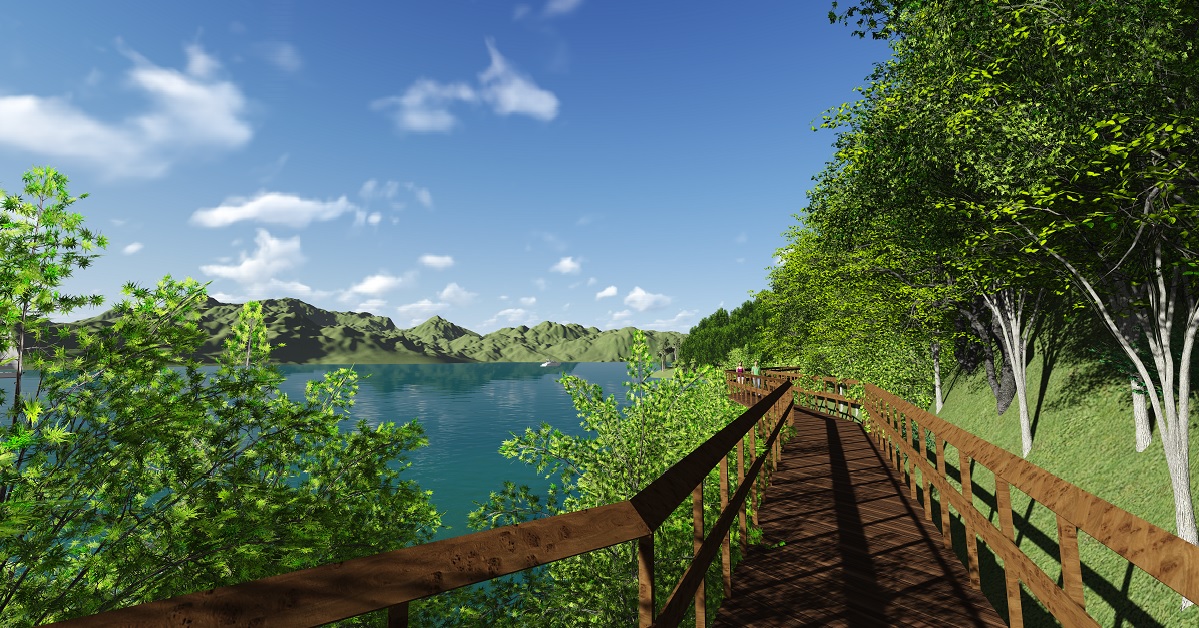The Living Payva D’Ouro project, of the Castelo de Paiva City Hall, is one of those that gave us immense pleasure in elaborating both the characteristics of the project and the impact it can have on the tourist attractiveness of the county and the quality of life of people. Get to know it better.
The territory of Castelo de Paiva
Located about 50 km from the city of Oporto, the municipality of Castelo de Paiva is located at the northern end of the district of Aveiro, in the territory of the Douro Verde.
The county has vast and valuable natural resources and a very high potential for nature tourism stimulated by its territory of rivers and valleys, with a transitional climate between the Atlantic and Mediterranean and excellent conditions for agricultural production, namely unique green wines , of international renown.
The morphology of its terrain, modeled by the years, is enhanced by the Douro and Rio Paiva valleys, both of which have an invaluable landscape, cultural, tourist and natural value. The rugged topography of the county draws ridges with wide and unobscured views, marked by points of tourist interest, cultural and religious as is the case of the high of S. Domingos and the top of Sto. Adrian.
Knowing Castelo de Paiva is to perceive a unique territory, is to taste the wines of the region, go down to the rivers and climb the mountains, let yourself be carried by the green hills and fall in love with the Douro and Paiva waters. It is to live a unique natural and cultural heritage, to live the mining legacy and to know the millennial fossils, to taste the unique local gastronomy and to know the people who make this county a unique place in our country. Knowing Castelo de Paiva is Living the Payva D’Ouro.
Living Payva D’Ouro and the valorization of the Green Douro

Living Payva D’Ouro is a project that the Castelo de Paiva Municipal Council intends to implement in the years to come, with a view to promoting the territory and sustainable tourism, focused on the natural and cultural values of the region. A bold project that can bring to the county the dimension that has always deserved in its tourist component.
In addition to the recovery of some riverside areas, the project envisages the implementation of a network of pedestrian paths that will cover the main themes of the county in terms of culture, heritage and nature: the mineral and fossil legacy, the river Paiva, River Douro, the production of green wine and the landscape of the mountains.
More than bringing visitors to the paths, the project aims to introduce the life of the county in the experiences of the users, so that the act of going through each route is a unique experience, which leaves the visitor more knowledgeable about the natural and cultural heritage. In addition to the experience of visitation, it is intended to create a personal and deep relationship between the territory and who comes to know it. It is understood that only through the creation of this relationship can the visitor be involved with the landscape, being guaranteed its return in the near future. Fonte Camara Municipal of Castelo de Paiva
It could go further by saying that after the implementation of the route network, together with the recovery of the Midões do Boure and other investments throughout the Green Douro in recent years, the region will benefit greatly from the project by increasing the visitation and the dynamics that are expected to see happen with the arrival of new tourists. It is hoped that in this way the Douro Verde will greatly benefit from the ability to fix tourists who normally travel between Douro Vinhateiro and Oporto, losing the opportunity to get to know the middle region of Douro, with so much to offer.
The Viver o Douro project

With funding recently approved, the course Viver o Douro has about 15 km of extension in this first phase of execution. This extension will be carried out mostly along existing routes, which once served to monitor the rivers or crossings between the Douro villages, with the provision of thematic viewpoints, pontoons, and a small walkways in areas where the circulation is shown otherwise impossible.
The thematic route is inspired by Douro winemaking tradition, namely in the Rabelo boat, which transported Port wines from Alto Douro Vinhateiro to the cellars located at the mouth of the Douro. It will include passage in the villages of Midões and Gondarém, with examples of vernacular architecture characteristic of the region, and will have a set of signage that will allow visitors an easy orientation, with information about the main elements of natural and cultural heritage.
APROplan has developed the Living the Payva D’Ouro project since the Preliminary Study of the Execution Project. Do you have an idea or project that you would like to see developed in your area? Contact us and find out the best way to make it happen.
